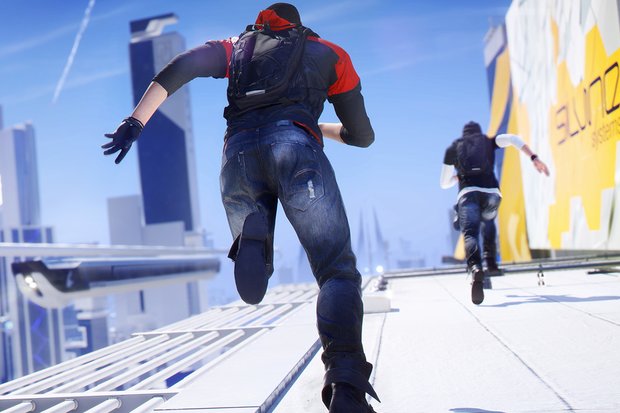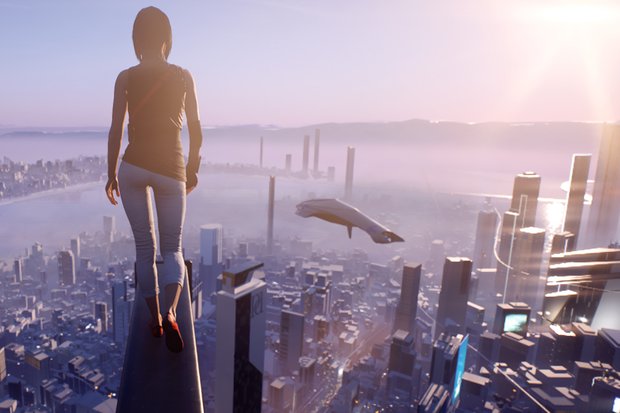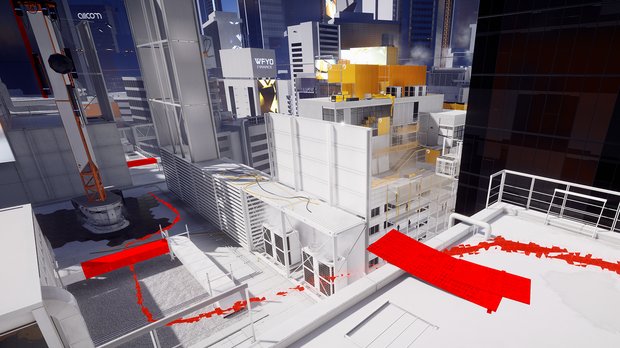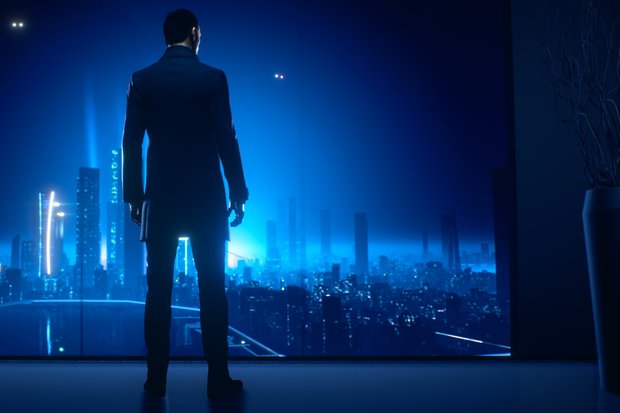Catalyst is the Mirror's Edge game you always wanted
I realised how much the original Mirror's Edge got under my skin during my walk to work after I finished it back in 2008. The muscle memory drilled into me by DICE's first-person platformer turned every boring wall, ledge and fence from my hometown into a level from the game – one I definitely couldn't play myself because it'd be frowned upon and I'm just too heavy. I knew Mirror's Edge Catalyst had successfully tapped into the same mindset when I wandered through DICE's Stockholm offices after sampling the upcoming closed beta, and started feeling the same sensation of the real world turning into a series of obstacles. This is a follow-up that's retained the best thing about the first game in its entirety – the intricate free-running – and revamped almost everything else.
The biggest change is the open-world setting, which provides an entirely different experience to the tunnel-shaped locations of the original. The first area has a similar look to the early levels of the first game, all unsettlingly clean white rooftops. Your relationship with the environment changes because of this new structure, operating more like a large playground, where mission markers will take you across the same locations multiple times. You get familiar with routes, even though there’s almost always more than one way to get to where you want to go. Between missions, the pace is a little more relaxed. If you want to hang around the same place just running around for fun, you can, or you can set a waypoint to your next objective on the map, then have the environment light up in red and take you there.
Mirror's Edge is one of the few games I finished on hard, and in Catalyst I feel like I'm picking up right where I left off. While DICE has tweaked the free-running and movement in apparently subtle ways, wall-running, box-jumping and pipe-climbing all feel pretty much the same to me. Timing and positioning is still everything with the platforming. What's interesting is that you start the story with a couple of Faith's abilities from the original game removed. When Faith takes a fall, you won't be able to roll at the last second to keep your momentum going or stop her from being injured, and the instant 180 degree turn isn't part of her initial skill set, either.
Instead, you unlock these two moves through an upgrade tree, which is new to the game, and also bolsters Faith's combat repertoire over time. The thinking is that one of the first game's problems was its lack of accessibility – here, you have a better chance of learning things one at a time by unlocking them, which seems like a sensible move in principle. Within about an hour of finding collectables around the world and finishing missions, I’ve gathered enough XP to upgrade Faith to a more recognisable 2008 version.

I’m glad they decided to try and ease players in, rather than tweak the platforming to make it easier. I thought Mirror's Edge was spot-on when it came to the free-running, and didn't need to be simplified to appeal to those used to open world games where holding one button does all the work for you. I'm delighted they've kept it as is. It demonstrates confidence in what the original Mirror's Edge was about.
Combat, by contrast, needed more work, and DICE was clearly aware of that. Guns are gone this time around, and there are two different combat systems depending on whether you're on the move or have nowhere to run. Maintaining your momentum builds up a bar on the bottom of the screen, and attacking at just the right moment when running at full speed will knock an enemy down so Faith can keep moving. String a bunch of these instant takedowns together and you'll feel like a superhero.

This is a neat way to merge combat and platforming, admittedly, but there's not enough meat in momentum-based fighting alone to carry an entire game. That's why there’s a dedicated melee combat system, too, where players can take guards on in close quarters. Faith now has the ability to kick enemies in the direction of your choosing, which means you can be more tactical about positioning in battle. You can make guards tumble into each other, or better yet, stumble off rooftops to their deaths. For me, it's more involved than the satisfying-but-simple fighting in the first game, particularly when incorporating Faith's new directional dodge, which feels like you're playing a fighting game in first-person. Combat didn't seem too frequent, operating like a break in pace from the platforming, which is still the centrepiece in Catalyst.
Sign up to the GamesRadar+ Newsletter
Weekly digests, tales from the communities you love, and more
I'm relieved they kept free-running more or less as is from the first game for another reason. The killer new feature for me during my hands-on demo was the ability to create social challenges on the fly throughout the open world. There are two kinds you can make and participate in: B.E. Emitters, which you can drop in awkward-to-reach parts of the world then task your friends with finding (via a companion app), and more excitingly, time trials which you can create at your own pace then publish either publicly or just for friends. Tap right on the d-pad and you can start laying down checkpoints for a time trial instantly, and you can set markers more or less where you want, providing the starting point doesn't overlap with any nearby races that other players have set up.

I created one run, for example, where players had to hop over obstacles for 30 seconds, then climb a pipe about two stories before wall-running into a finishing marker that was suspended in mid-air. After hitting this, they had to roll on landing after the trial or Faith would die. I was pretty proud of this last part. Each challenge you set has its own leaderboard, so you can see how other friends' runs at the same course compare. This is an enormously compelling extension on the time trial stuff in the first game, and having those challenges organically dropped into the open world is a very sensible move – it shows that DICE has thought hard about what the series needed to do in order to feel up-to-date, and to capture the minds of speedrunners. Some players will get infinite amounts of fun out of these challenges, and many will experience the anguish of more talented runners beating them at their own races.
After about three or four hours of poking around the rooftops of the City of Glass, I was more than convinced that going open world was the right move for Catalyst. I was certainly ready to see new environments by this point, though, and how much variation these other hubs offer will be key to the game's longevity. Certain missions take you to one-off locations, but you’ll feel very familiar with the same series of buildings after a while. There's a lot more of the world to see, based on how far the map in the menu goes, and there were even corners of this opening area I didn’t entirely uncover.

The only element I'm not not convinced they've improved from the first game is the story. The voice-acting and presentation is way better, but the narrative, which DICE has made a relatively big deal as being Faith's origin, feels like a generic dystopian tale of corporations and rebellion. I must admit I didn't go into Catalyst expecting the story to be loads better - perhaps the finished game will prove me wrong as more of the pieces come together.
This is still just a fraction of the long-awaited follow-up, after all, but everything I loved about the first Mirror's Edge is present. This repackages those same ideas into something that feels more fully formed, and addresses criticisms of the original. I feel like DICE sees this as less of a sequel and more their revised notion of what Mirror's Edge always should've been.
Samuel is now a PR Manager at Frontier Development, but was once a staffer at Future PLC. He was last the Entertainment Editor at TechRadar, but before that he was the UK Editor at PC Gamer. He has also written for GamesRadar in his time. He is also the co-host of the Backpage podcast.


